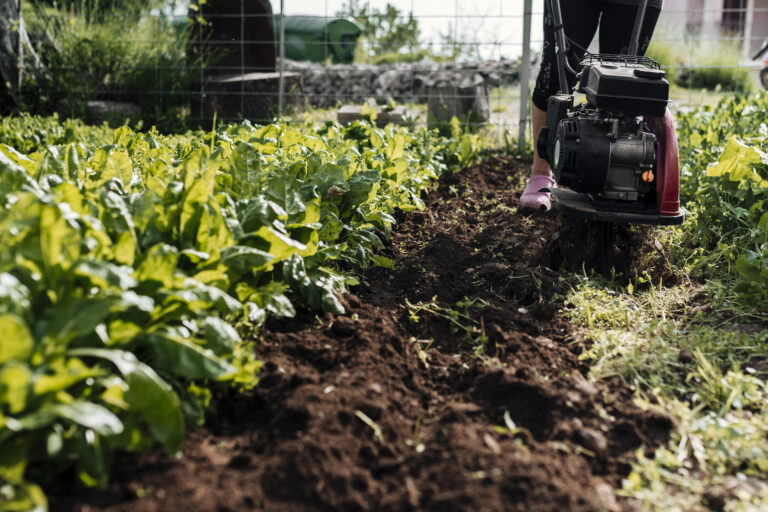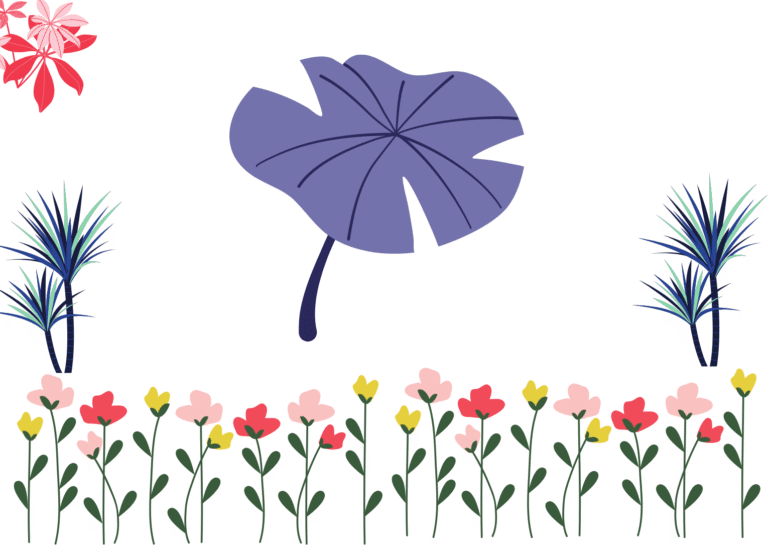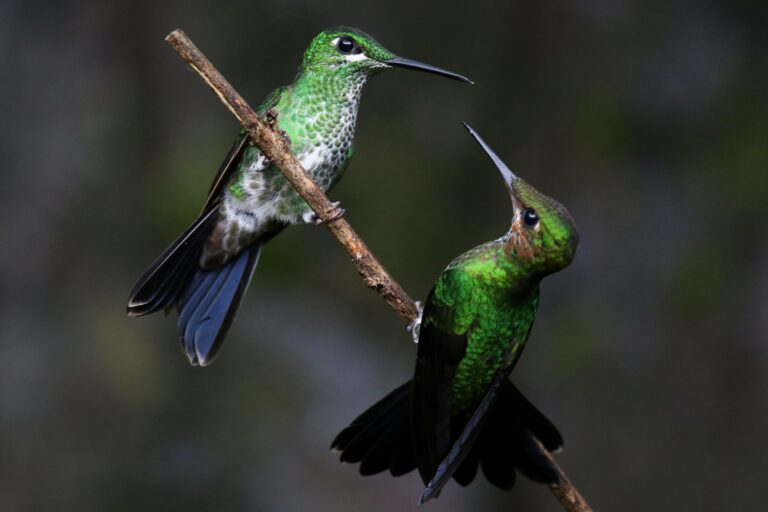Why is a Yard Called a Garden?: Unearth the Secrets
A yard is often called a garden, but why is that? The terms might seem interchangeable, yet they carry different meanings and histories.
This question invites us to explore the language and culture behind these words. A yard typically refers to an area around a home, often grassy or paved.
A garden, on the other hand, suggests a space for planting flowers, vegetables, or herbs.
Understanding this difference helps us appreciate how language evolves over time. The connection between yards and gardens reflects our relationship with nature.
This post will delve into the reasons behind this naming and what it reveals about our gardening practices and cultural values. Let’s discover the fascinating history of these terms together.
What Is a Yard in Human Society or Garden Context?
In modern usage, a yard generally refers to an outdoor area surrounding a house or building. It’s usually covered with grass, plants, or pavement, and may include gardens, trees, patios, or playgrounds.
In human society, the yard functions as a private green space for relaxation, socializing, or growing plants.
You might hear people talk about a backyard (behind the house), front yard (in front), or courtyard (an enclosed area, often in the center of a building or group of buildings).
What Was a Yard Called in Old Times?
Historically, the word yard comes from the Old English “geard”, meaning enclosure or garden. In older English and medieval times, “courtyard” or “bailey” (especially in castles) referred to enclosed outdoor spaces.
In rural areas, older fenced yards were also called:
-
Homestead yards
-
Farmyards (on farms)
-
Dooryards (space just outside the door)
-
Kitchen gardens (if used for growing food near the house)
Why Is Grass Called a Yard?
Technically, the grass itself isn’t called a yard, but people commonly refer to their grassy outdoor space as a “yard” because it’s the main feature of it.
The term “yard” refers to the entire outdoor area, while grass is just the ground cover. Over time, this has become informal shorthand, especially in the U.S. when people say “mow the yard,” they really mean “mow the grass in the yard.”

The Roots Of Terminology
The terms “yard” and “garden” often confuse people. Both relate to outdoor spaces. Yet, they have different meanings and histories. Understanding these terms helps clarify their usage. Let’s explore the origins of these words.
Comparing Yard And Garden Origins
The word yard comes from the Old English word “geard.” It means an enclosed space. Yards are often grassy areas around homes. They can also serve practical purposes, like holding tools or pets.
On the other hand, garden has roots in the Old French word “jardin.” This word originally came from the Latin “hortus.” Gardens focus on planting and growing. They are spaces for flowers, fruits, and vegetables. The purpose of a garden is beauty and food.
| Term | Origin | Purpose |
|---|---|---|
| Yard | Old English “geard” | Enclosed space, often grassy |
| Garden | Old French “jardin” | Space for planting and growing |
Linguistic Evolution Across Cultures
Different cultures have their own terms for these spaces. Here are a few examples:
- Spanish: “jardín” for garden, “patio” for yard.
- French: “jardin” for garden, “cour” for yard.
- German: “Garten” for garden, “Hof” for yard.
These terms reflect cultural values. Gardens represent nature and beauty. Yards often symbolize home and safety. Understanding these words offers insight into how different societies value outdoor spaces.

Cultural Interpretations Of Outdoor Spaces
The way we view our outdoor spaces reveals much about our culture. These spaces can be a yard, garden, or park. Each term carries different meanings in different cultures.
Understanding these differences helps us appreciate our relationship with nature. It also shows how these spaces reflect our values and lifestyles.
American Yards Vs. British Gardens
In America, the term “yard” often refers to the area surrounding a home. It is usually a place for relaxation and play. Families may have lawns, flower beds, and sometimes vegetable patches. Here are some features of American yards:
- Large grassy areas
- Patios or decks for gatherings
- Fenced for privacy
In contrast, British gardens emphasize design and aesthetics. They often focus on beauty and plant variety. British gardens are known for their:
- Flower beds with diverse plants
- Formal layouts and paths
- Emphasis on seasonal blooms
The concept of a “garden” in Britain carries a sense of artistry. It reflects a deep connection to nature. This contrasts with the more functional view of “yards” in America.
The Influence Of Landscape Design Trends
Landscape design trends shape how we view outdoor spaces. These trends vary by culture and region. In recent years, some popular trends include:
| Trend | Description |
|---|---|
| Sustainable Design | Focus on eco-friendly materials and native plants. |
| Outdoor Living | Creating spaces for dining and relaxing outside. |
| Minimalism | Simplicity in design, fewer plants, and clean lines. |
These trends influence how we create our yards and gardens. People look for ways to connect with nature. They want spaces that provide beauty and function. Understanding these trends helps us appreciate diverse outdoor interpretations.
Societal Impacts On Garden Nomenclature
The terms we use for our outdoor spaces reflect our society. Words change based on culture and history. Understanding why we call a yard a garden reveals much about us.
Factors like class, land ownership, and urbanization shape our language. These influences also affect how we view nature. Let’s explore these elements in detail.
Class And Land Ownership
Class plays a big role in garden names. Wealthier people often have larger properties. They might call their space a garden to show status.
A garden suggests beauty and care. It implies a level of leisure. For those with less land, a yard is practical. It serves a different purpose.
Land ownership also matters. Gardens often connect to ownership pride. People take pride in their gardens as personal spaces.
Urbanization And Space Utilization
Urban areas change how we think about gardens. Space is limited in cities. Small yards often become gardens for relaxation.
People turn to gardening for many reasons. It offers fresh food and a green escape. In cities, a garden can mean survival and joy.
The term “garden” becomes more than just a label. It reflects a way of life. Urban gardens show creativity within constraints.
The Functional Divide
The term “yard” often means a space for practical use. A “garden” suggests beauty and design. Understanding the differences helps us appreciate both.
Utilitarian Spaces Vs. Aesthetic Areas
Yards serve various practical functions. They can include:
- Play areas for children
- Spaces for pets to roam
- Storage for tools and equipment
These areas focus on utility and convenience. They provide essential services for families.
Gardens, on the other hand, emphasize beauty and design. They often feature:
- Colorful flowers
- Graceful shrubs
- Artful pathways
Gardens enhance a home’s visual appeal. They invite relaxation and enjoyment.
Agricultural Land Vs. Ornamental Retreats
Some yards serve as agricultural spaces. They grow vegetables and fruits. This is practical for many families.
In contrast, gardens are often ornamental. They focus on aesthetics, not food production. Here are some common features:
| Type | Purpose |
|---|---|
| Agricultural Land | Food production and sustenance |
| Ornamental Gardens | Beauty and relaxation |
Each space has its place. Yards can be functional, while gardens can be beautiful. Both contribute to a home’s charm.
Literary And Artistic References
The concept of a yard as a garden appears in many stories and art forms. Gardens symbolize beauty, growth, and life.
They often represent a connection to nature. Writers and artists use gardens to express deeper feelings and ideas.
Gardens In Literature
In literature, gardens often serve as important settings. They can represent love, hope, or even secrets. Think of the famous garden in “The Secret Garden” by Frances Hodgson Burnett.
This garden transforms from a forgotten place into a vibrant space of healing.
Writers like William Blake and John Keats also celebrate gardens. They describe them as places of inspiration.
In their works, gardens reflect the beauty of nature and human emotion.
Yards In Visual Arts
Visual artists portray yards and gardens in many ways. They capture the essence of nature’s beauty. Famous painters like Claude Monet used gardens in their works. His painting “Water Lilies” shows how yards can be peaceful and inviting.
Photographers also find inspiration in yards. They capture moments of life in these spaces. Yards tell stories through their colors and textures. Each image reflects the life that unfolds within them.

Psychological Significance
The term “garden” often evokes feelings of peace and connection. A garden space can transform a yard into a sanctuary.
This transformation has important psychological benefits. People feel calmer and more relaxed in green spaces. Nature has a unique way of healing the mind and body.
The Therapeutic Garden
A therapeutic garden is more than just plants. It is a place for healing. Studies show that gardens reduce stress and anxiety. Here are some key benefits:
- Reduces Stress: Spending time in nature lowers cortisol levels.
- Boosts Mood: Greenery can increase happiness.
- Enhances Focus: Nature improves attention and concentration.
- Encourages Exercise: Gardening promotes physical activity.
Gardening also offers a sense of accomplishment. Growing plants gives purpose and joy. Many find comfort in nurturing life.
The Yard As A Family Space
A yard can become a vital family space. It encourages bonding and togetherness. Families often gather in gardens for activities. Here are some common uses:
- Outdoor meals and barbecues.
- Games and sports.
- Gardening projects with children.
- Quiet time for reading or relaxing.
These shared experiences create lasting memories. The yard becomes a backdrop for love and laughter. A garden fosters connection among family members.
Ecological Perspectives
Yards and gardens hold more than just beauty. They play a key role in our ecosystem. Understanding their ecological impact helps us appreciate their value. Both spaces can support wildlife and promote sustainability.
Biodiversity In Backyard Gardens
Backyard gardens are vital for biodiversity. They provide homes for many creatures. Birds, bees, and butterflies thrive in these spaces. Planting native species encourages local wildlife to visit.
A variety of plants offers food and shelter. This mix helps maintain healthy ecosystems. More biodiversity means stronger gardens. It protects against pests and diseases naturally.
Sustainability In Urban Yards
Urban yards can be sustainable habitats. They reduce pollution and manage rainwater. Green spaces lower temperatures, making cities cooler.
Using organic methods in gardens limits chemical use. This practice keeps soil healthy and water clean. Composting yard waste also enriches soil and reduces landfill waste.
Urban gardens encourage community connections. Neighbors share tips and resources. Together, they create a greener, healthier environment.
Modern Usage And Trends
Today, the terms “yard” and “garden” often overlap. Many people now see their yards as gardens. This change reflects new ideas about nature and home. People want green spaces that are more than just lawns. They desire beautiful, productive areas.
Modern gardening trends focus on sustainability and wellness. Homeowners want to grow their own food. They aim to create vibrant spaces for relaxation. This shift has led to a rise in home gardening.
The Resurgence Of Home Gardening
Home gardening is making a comeback. More people are planting vegetables and herbs. They prefer fresh, homegrown produce. Gardening also offers a great way to connect with nature.
Families enjoy spending time together in their gardens. Kids learn about plants and responsibility. This hands-on experience builds strong family bonds.
Future Of Urban Green Spaces
Urban areas are becoming greener. Cities are adding parks and community gardens. These spaces help improve air quality and reduce heat. Green areas also provide places to relax and enjoy nature.
People are advocating for more green roofs and vertical gardens. These ideas make cities more livable. They also promote biodiversity. Urban green spaces create a healthier environment for all.
Frequently Asked Questions
Why Do We Call A Yard A Garden?
The term “garden” originates from Old French and means “to enclose. ” A yard is often seen as an enclosed space where plants grow. Thus, the terms have become interchangeable, as both refer to areas for cultivating plants and flowers.
What Differentiates A Yard From A Garden?
A yard typically refers to the open area around a home, while a garden is a designated space for planting. Gardens focus on horticulture and aesthetics, whereas yards may serve functional purposes like play areas. However, many yards include garden elements, blurring the lines between the two.
Is A Garden Always In A Yard?
Not necessarily. A garden can exist in various settings, including balconies, rooftops, or community spaces. While many gardens are found in yards, they can thrive anywhere with proper sunlight and soil. The concept of a garden extends beyond residential spaces.
How Can I Turn My Yard Into A Garden?
To transform your yard into a garden, start by selecting a suitable area with adequate sunlight. Remove any weeds and debris, then enrich the soil with compost. Choose plants that suit your climate and design a layout that enhances aesthetics and accessibility.
Regular maintenance will ensure your garden flourishes.
Conclusion
A yard is more than just grass. It can be a garden, too. People use this space for many reasons. Some grow flowers. Others plant vegetables or herbs.
This mix of uses makes it special. Understanding why we call a yard a garden helps us appreciate it more.
It shows our connection to nature. Whether big or small, every yard can bring joy. Embrace your outdoor space. Turn it into your own little paradise. A yard truly has the potential to be a garden for everyone.






